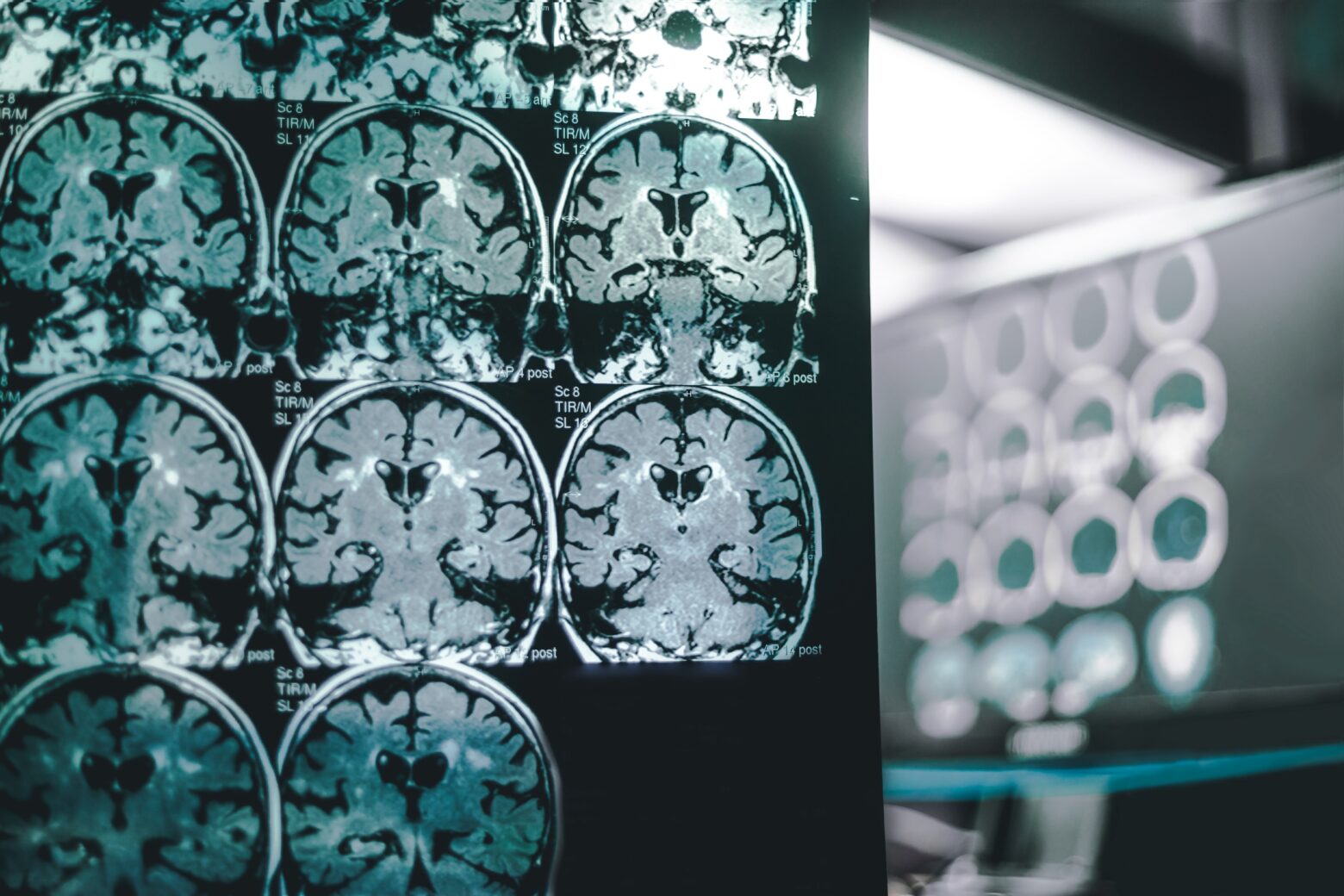The causes of neurodegeneration: Part II of our interview with neuroscience researcher Dr. Dale Bredesen

Editor’s Note: If you haven’t read it yet, make sure to see part I of our interview with Dr. Bredesen to read about his new book, the origins of his research, and his views on Alzheimer’s disease.
We recently interviewed Dr. Dale Bredesen, a neuroscientist who has researched neurodegeneration for over 30 years. His first book The End of Alzheimer’s: The First Program to Prevent and Reverse Cognitive Decline was a New York Times best seller. His second book, The End of Alzheimer’s Program, was published in August 2020 and dives deeper into his protocol to help people combat neurodegeneration.
In the second part of our interview with Dr. Bredesen, we take a closer look at the different types of Alzheimer’s diseases and the various “upstream” effects that can lead to neurodegeneration, including poor fueling of the brain, dysfunction in the immune system, environmental toxins, and a leaky gut.
Dr. Bredesen stresses one critical aspect in his program—the amyloid buildup we see in Alzheimer’s is a symptom of the disease, not the cause. In order to address the disease, he believes, we must stop focusing on amyloid and address the cause of its accumulation.
The importance of fueling the brain
The Paleo Diet: Dr. Cordain taught me that the human brain is so metabolically demanding that as a species we had to de-evolve our digestive system. For example, we do not have as good a digestive system as a ruminant or many of our early ancestors. And that’s because we didn’t consume the calories to evolve both a great digestive system and a powerful brain. As a result, the brain is very metabolically demanding; if we are not giving it the nutrients it needs, we will run into an issue. Is that correct?
Dr. Bredesen: Very interesting point. Professor David Nichols, who before his retirement was the leading mitochondrial physiologist in the world, pointed out that we all like to think of these various parts of our bodies as stable, solid, great foundations.
But the reality is we’re in the midst of this evolutionary competition. We’re really functioning like Maseratis—we’re trying to outdistance our competitors. And so, the fact is, things go wrong. You’re doing the best you can. You’re literally in an evolutionary race every day. These things aren’t set up to last forever. As you said, you’re stealing from the gut to support your brain.
There’s a wonderful study that showed if you simply look at the average oxygen saturation [of blood] during the night while you’re sleeping, that is directly related to the volumetrics of multiple nuclei within your brain, including nuclei critical for Alzheimer’s disease. So, as you begin to come down from the optimal [saturation,] which is 96 to 98 percent—that’s where we all should be while we’re sleeping—as you begin to come down from that, you cannot support the same brain. You begin to see atrophy within the brain [when saturation is too low].
We require lower homocysteine, we require support from B12, on and on and on. There are these critical features that we require to keep a brain active, and oxygen is one that’s overlooked.
When people come in because of cognitive decline, the doctor doesn’t say to them, “Wait a minute, we absolutely need to do a sleep study. We need to see what your oxygenation is at night or at least do oximetry. We need to know if you have sleep apnea. We need to know if you have upper airway resistance syndrome. We need to know if you’re ending up producing adrenaline because you have things like low sugar at night.”
You’ve got to support that amazing brain. You’ve got an amazing supercomputer inside that skull of yours, and you’ve got to support it. And it’s not as simple as taking a medicine.
Dr. Bredesen
A drop in glucose is another common thing we see in people. They wake up in the middle of the night. They don’t know why, of course, until they do CGM—continuous glucose monitoring. And what they find is, “Oh yeah, when I woke up at 3 a.m., and couldn’t get back to sleep, that’s because I had eaten a poor diet and my glucose dropped down to 45.” We see this all the time.
So, you’ve got to support that amazing brain. You’ve got an amazing supercomputer inside that skull of yours, and you’ve got to support it. And it’s not as simple as taking a medicine.
The other four types of Alzheimer’s disease
The Paleo Diet: In your book you mentioned two types of Alzheimer’s: inflammatory and trophic. Is there a third form of Alzheimer’s?
Dr. Bredesen: There are actually six types. Type one is inflammatory. Type two is a trophic form. Then there’s type 1.5, which is glycotoxic or sweet Alzheimer’s disease. Many of us who eat a diet high in simple carbs and processed foods end up with this type. It is very prevalent. We call it 1.5. because it has features of types one and two. There’s, of course, the glycation of proteins, and a measure of that is hemoglobin A1C [elevated A1C is is also one of the most common measures for diabetes].
But there are hundreds of proteins that are glycated. They are pro-inflammatory, and they’re also dysfunctional because you alter proteins when you glycate them. It’s a little bit like having a bunch of remoras on a shark.
Proteins undergo glycation that gives you the inflammation of type one [Alzheimer’s], but because of the high insulin in dealing with this, you develop insulin resistance, which is incredibly common. Therefore, you don’t have the appropriate insulin signaling.
You could measure the phosphorylation of insulin receptor substrate, which is one part of your insulin receptor signaling downstream, and see that it’s associated with turning down your response. It has specific serine and threonine phosphorylation that are associated with turning down this signaling.
[Note: in short, this results in a reduced ability to sense insulin. A reduced ability to sense insulin is also the key characteristic of type II diabetes]
So that’s type 1.5.
Type three is toxic, and the toxins basically come in three types. There are metals and other inorganic elements like mercury. Inorganic compounds such as what you see with air pollution. This is very clearly associated with increased risk for cognitive decline.
Then there are organic compounds like formaldehyde and benzene, toluene and glyphosate. And then the third group is the biotoxins; things like mycotoxins from molds, ochratoxin A, trichothecenes, gliotoxins, and things like that, which come from specific mold species.
Type four is a vascular type, and type five is traumatic.
All of these types increase your risk. There are different things for different people. We need to ferret things out, and we need to address them.
We’re now in the middle of the first clinical trial in history that does just that. All previous clinical trials for cognitive decline pre-determined a treatment. So, when you are trying to figure out if you’ll be allowed to do a trial, you have to say, “Here’s what I’m going to use in my treatment. I’m going to treat with this drug or I’m going to treat with exercise,” or whatever you’re going to treat with. But you pre-determined it, which makes no sense.
Our trial will be completed in December of 2020 and should be published in 2021. In this case, we looked at many, many different contributors. Then we can address the ones that are actually causing the decline in each person.
The protective nature of the amyloid build-up
The Paleo Diet: I want to return to your point that the amyloid build-up is a protective mechanism. This reminds me of my research into autoimmune disease. We know that a particular type of T Cell, called TH17 cells, are involved in almost all autoimmune disease, and they certainly get a bad reputation from the research.
But the fact is that TH17 cells, when they function normally, serve an important protective function in the body. It is only when the inflammation becomes chronic and aberrant that you have an issue. It seems like you are saying something very similar about amyloid and neurodegeneration?
Your body’s not trying to kill you, your body is trying to respond to something. It’s unfortunate that the response itself is driving the decline.
Dr. Bredesen
Immune system dysfunction
The Paleo Diet: It’s very interesting that your book chapter on the dietary steps to take to fight neurodegeneration is entitled “Put out the fire,” in reference to reducing or reversing this innate inflammation.
Dr. Bredesen: Absolutely. Someone asked me last night, “Why is it that so many of these solutions are so similar?” We’re driving back to optimal human physiology, and you want to have an optimal immune system.
Of course, there’s a lot of discussion now about immunosenescence [the natural decline in the immune system], another big issue as we age. You want to make sure that you’re able to make and use appropriate hormones and you want to make sure that you’re able to produce appropriate trophic factors and trophic factor signaling.
And having a leaky gut is going to be damaging over time. You may end up with Alzheimer’s, you may end up with lupus, you may end up with rheumatoid arthritis, but you are certainly going to be compromised in some way by a chronically leaky gut.
We’re all learning how to drive ourselves to optimal physiology. As part of that the quantified self [using physiological measurement devices] comes up again and again. Unlike ever before, we can now use all sorts of things like looking at heart rate variability, oxygen saturation, various sleep cycles, your ongoing blood pressure, and continuous glucose monitoring.
Many of us now can look and see what’s actually going wrong in a way that, unfortunately, many of our physicians are not doing.
The body’s microbiome and the blood-brain barrier
The Paleo Diet: Have you read the work of Dr. Fasano, who is looking into leaky gut? He started by looking at Celiac disease and has now been linking leaky gut to more and more conditions. It appears to be a root cause in many chronic diseases.
Dr. Bredesen: Absolutely. David Perlmutter has a nice book in which I have a chapter on Alzheimer’s and Professor Fasano has a chapter about leaky gut. There’s also a chapter in that book on something we have not looked at enough: bacteriophage [a virus that infects and then replicates within bacteria].
Are these things also potentially contributing to neurodegeneration? Some would argue that we should be looking further at these things as well. I think we’re really at the beginning of an explosion of information about the various pathogens, and [in the case of our microbiota] they are not just pathogens.
We used to think about infections as bad, and now we realize it’s not about infections, it’s about a change in the overall composition. Whether you’re talking about the gut or sinuses or skin or mouth, it’s about getting the right guys in there and not getting the wrong guys in there. And that is critical for optimal health.
The idea of “let’s just wipe them all out because that’ll help” is really an old-fashioned notion.
The Paleo Diet: Does our microbiome affect the brain?
Dr. Bredesen: Well, the other striking thing is how the various microbiomes may in fact also include the brain. We were always taught that the brain is a sterile organ. Of course you shouldn’t have things rummaging around in there.
Well, it’s not clear yet. It’s still back and forth; still controversial. But certainly, there may turn out to be a normal microbiome of the brain. Time will tell.
Professor Fasano makes a very good point about the fact that things that tend to give you leaky gut also tend to give you a leaky blood-brain barrier, which is both concerning and fascinating.
Dr. Bredesen
The Paleo Diet: So that brings up another important question. Both the gut and the brain have tight junctions between cells to keep bad microbes out. Leaky gut is essentially an opening of those tight junctions. It allows gut bacteria into the system. So, likewise with the brain, are we supposed to have bacteria in the brain or is that a result of inappropriately “leaky” tight junctions in the blood-brain barrier?
Dr. Bredesen: Great question. First, Professor Fasano makes a very good point about the fact that things that tend to give you leaky gut also tend to give you a leaky blood-brain barrier, which is both concerning and fascinating. As far as we know, it’s good not to have a leaky gut and good not to have a leaky blood-brain barrier.
There are specific things, like nutrients, that you transport into your brain, but [transporters] are setup to do that. But you lose that barrier when things are inflammatory, for example.
You asked if we are supposed to have a normal brain microbiome. Well, that’s a little bit different of a question because there are organisms that will cross the blood-brain barrier, in the absence of a leaky blood-brain barrier. So, it’s not necessarily about the leakiness.
There was a very interesting experiment published about a year ago.[1] This was a study in rodents, looking at what happens when a typical organism that we’re all exposed to—in this case, Candida [a type of fungus]—simply gets into the bloodstream. This is going to happen over time to many of us. They assumed that your blood brain barrier, of course, would explode. They took rodents who had a normal, not a damaged, blood-brain barrier and simply injected some Candida and said, “Let’s see where it goes.”
Well, surprise, surprise. It ended up crossing [the barrier] and getting into the brain. The brain responded with some early innate immune system responses, which turned out to look very much like the earliest changes in Alzheimer’s disease.
So, the researchers’ argument was that we can’t assume that these things aren’t getting across just because we have a good blood brain barrier. We are probably exposed. Just as, again, we were all surprised many years ago to find out that when you brush your teeth, you often have a transient bacteremia [the presence of bacteria in the bloodstream]. But that is part of life and you deal effectively with that bacteremia. You don’t get meningitis. You don’t get septicemia, you don’t spike your TNF, and things like that. It is a part of normal life we are dealing with every day.
We probably are dealing with at least transient interactions between various microbes and our brains. It may be that our ability to keep it sterile is critical. We simply don’t know. The jury is still out on that. There’s no question that in the brains of patients with Alzheimer’s, you see all sorts of different microbes.
Targeted ultrasound
The Paleo Diet: The medical community is very excited right now about a targeted ultrasound treatment for Alzheimer’s, which intentionally opens the blood brain barrier. What are your feelings about that?
Dr. Bredesen: I have to say, it’s gotten a lot of press. It’s been shown to be helpful in mice that have a lot of amyloid for genetic reasons. But here’s the problem: For 95 percent of us, we get Alzheimer’s because we have upstream insults, and we respond to that by making amyloid as part of the protective response. For less than 5 percent of us, it’s the opposite. We’re making too much amyloid without enough cause. In other words, it’s like a hyper-responsiveness because we have either a mutation in our APP, our presenilin 1, or presenilin 2 [genes that are associated with Alzheimer’s].
Unfortunately, that’s the typical animal model [used in research]—but that model really only serve as a model for a very small number of people with Alzheimer’s. As opposed to finding a model that works for the rest of us who are getting Alzheimer’s because of metabolic syndrome or because of HSV-1, or because of T denticola, or on and on.
So yes, for those few people who are making too much amyloid, [the targeted ultrasound] may help. But for the vast majority of us, we want to get rid of the stuff that’s actually causing the amyloid. Then it’s fine to get rid of the amyloid after that.
Amyloid, however, is not terribly damaging to your brain as long as it’s in the plaques and is not oligomerized [bond together into larger molecular complexes]. So, it’s not surprising to me that we haven’t seen examples yet where they said, “Hey, we did this for humans, and over time they did much better.” My concern is, they may end up doing worse because you may end up producing more oligomers as you break this stuff down. I’m waiting to see the human data for sporadic Alzheimer’s—which is the vast majority of Alzheimer’s patients—using that ultrasound approach.
I actually think a number of the drugs—some of the antibodies, for example—that are so good at removing amyloid, have failed because if you just remove the amyloid and do nothing else, no surprise, people actually get worse instead of getting better. That’s because they’ve still got the insult going on. We’ve seen a number of people where this has happened. But I think these drugs will be valuable for people who have removed the upstream cause of the amyloid, and now you want to remove the resident amyloid.
People, unfortunately, haven’t used it that way. They’ve simply tried to do this as a monotherapy. And that simply has not worked. Millions of dollars of clinical trials have shown that this doesn’t work.
The Paleo Diet: So, to use a really simplified analogy: if you want to address the fact that your car is getting a lot of rust buildup, you can chip the rust off, but first you should deal with the fact that you’re driving on salty roads and never cleaning your car.
Dr. Bredesen: That’s exactly right. I mean, that’s how the rust got there. And as long as you keep driving on those salty roads, you’re going to keep accumulating the rust.
Check back next week for Part III of our interview with Dr. Bredesen, where we take a closer look at his solution to neurodegeneration and Alzheimer’s, including diet and ketosis.
References
[1] Y. Wu et al., “Microglia and amyloid precursor protein coordinate control of transient Candida cerebritis with memory deficits,” Nat Commun, vol. 10, no. 1, p. 58, 2019, doi: 10.1038/s41467-018-07991-4.




